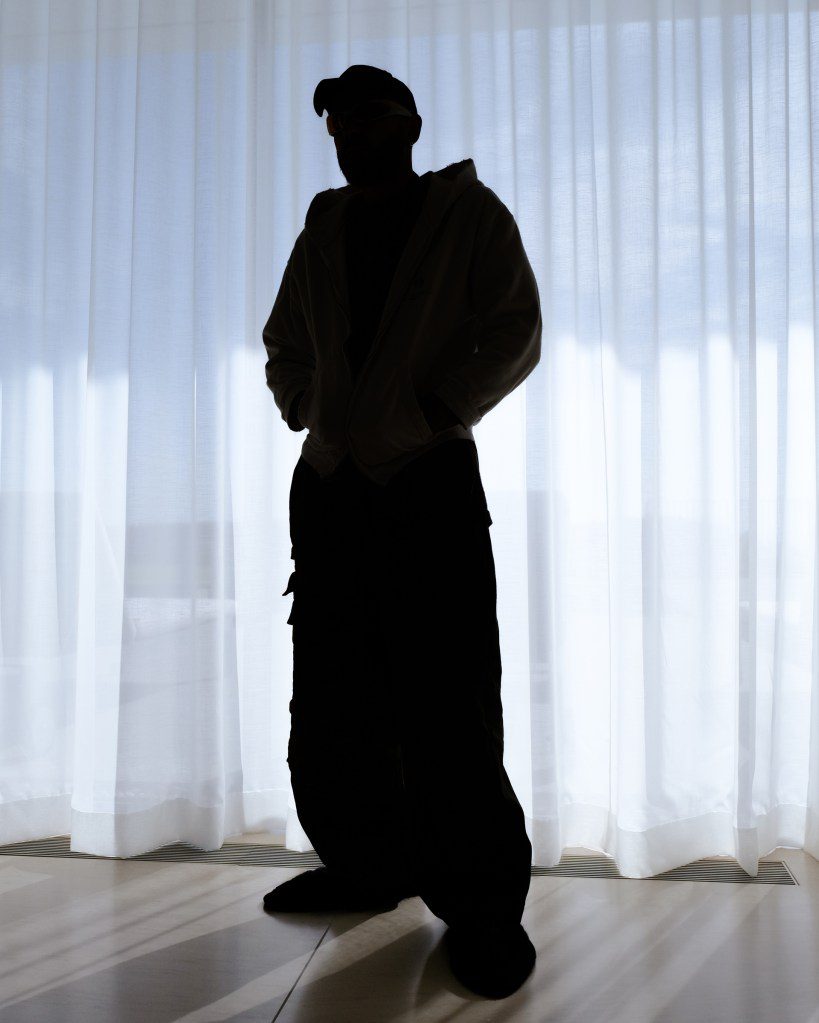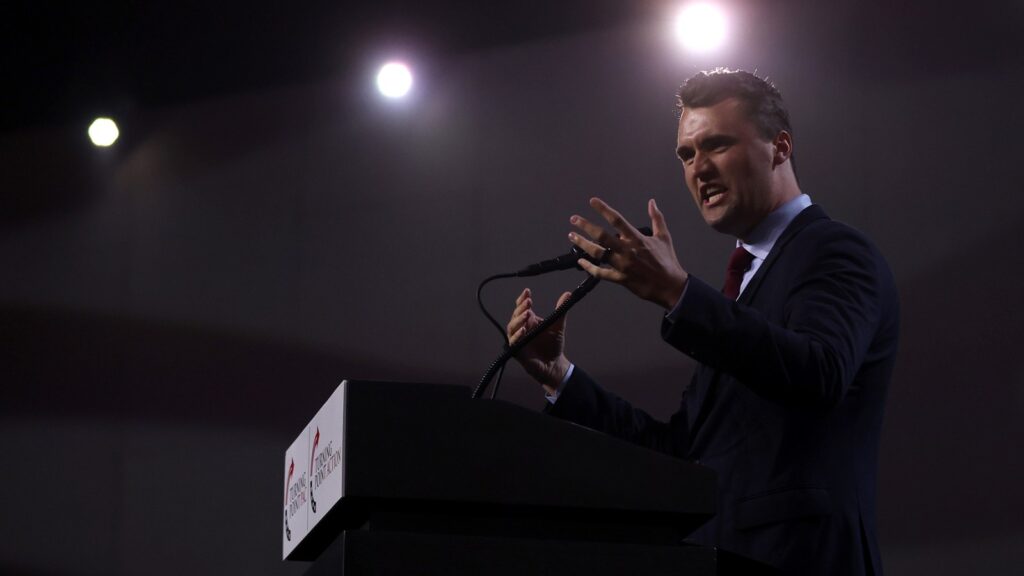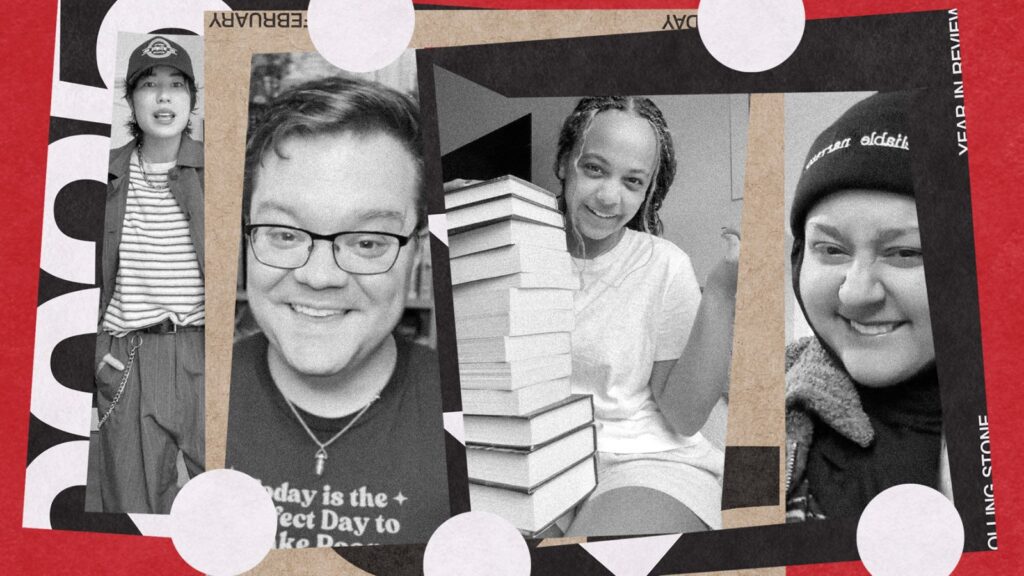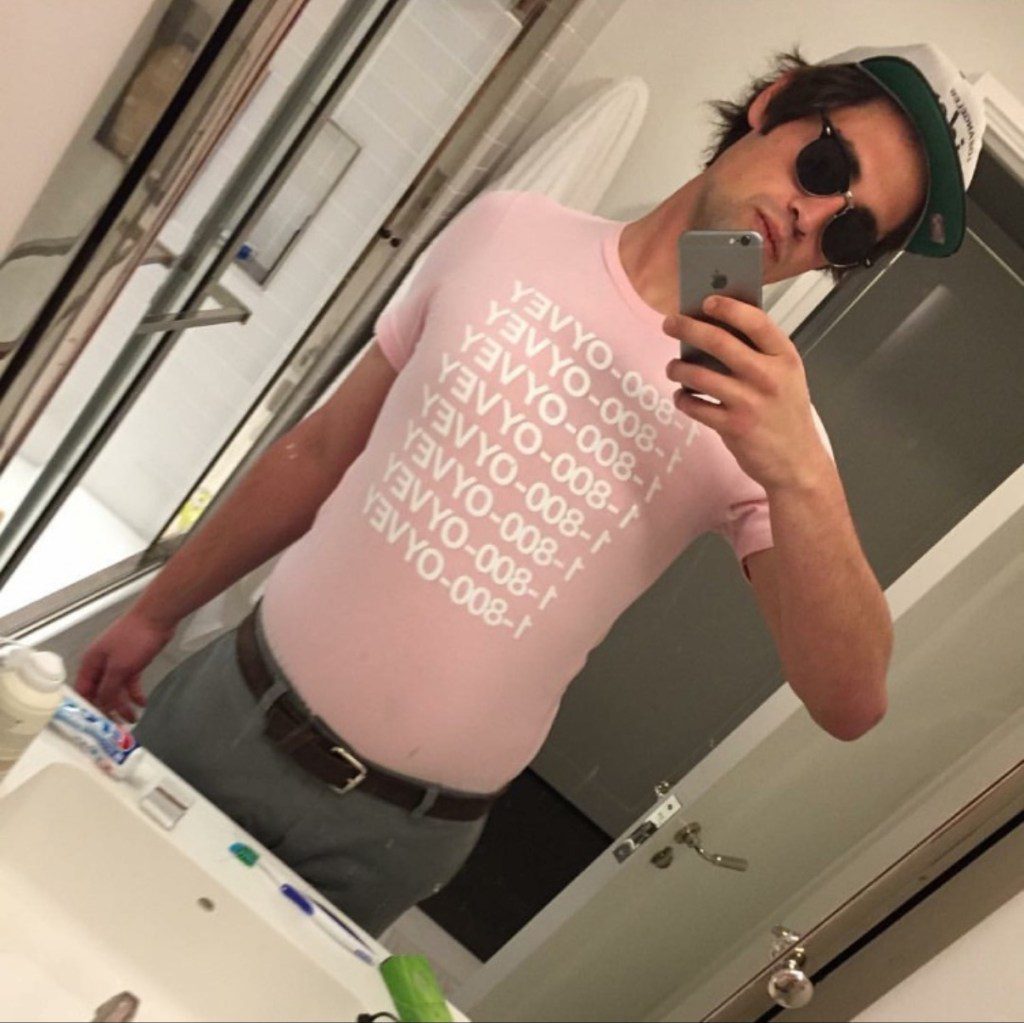Balenciaga’s Demna Reveals His Biggest Inspirations
I
t was a perfect Hollywood afternoon. There was sun, a slight breeze, and some of the most famous faces on the planet. And for Demna Gvasalia, there was fear.
The Balenciaga creative director has proven himself one of the most adept and blunt bottlers of our zeitgeist for the past decade, and his artistic interpretations are among the most polarizing and debated in fashion. It’s perhaps understandable then that after the brand’s first Los Angeles show in its 105-year history, he was “very afraid” to talk to the locals.
“What if they were like, ‘Oh, that’s how you see what’s going on here?’” Demna says.
We’re sitting in a sunlit corner of the mega mansion he’s been working out of since coming to the city from Paris a few days ago. It’s a little less than 24 hours after the show, and Demna’s wearing his own designs, as he always does — Balenciaga hotel slippers in royal blue, baggy denim camo pants, a hoodie bearing the tagline of Balenciaga’s latest ad campaign, “Be Different.” Perched next to him is his husband, Loïk Gomez, who goes by the name BFRND and composes the music for Balenciaga’s shows, in a red McDonald’s T-shirt and oversize Homer Simpson slippers, nodding attentively as we chat.
“But all the people I spoke with from here told me they completely related to it,” Demna says. “I can say it was a good response.”
BFRND adds, “They also talked a lot about shopping. All the people I talked to after the show were like, ‘Oh, my God. Let’s go shopping!’”
“It was very much about creating desire,” Demna continues. “And I think that’s all I want.”
On this morning, the 42-year-old designer appears at ease and somewhat amused by the immediate response to his fall collection. He has been calling it “a celebration,” or as he says this afternoon, a “love letter,” to the city. Los Angeles holds a special resonance for the brand. Given founder Cristóbal Balenciaga’s legacy in shaping Hollywood’s golden era of couture, along with Demna’s role in modernizing the visual lingua franca of streetwear (plus his hand in outfitting a new generation of hyper-celebrity), it’s a homecoming that’s been a century in the making.
It’s also one of Demna’s first visits back to the U.S. after a year of controversy. The troubles began with a pair of Balenciaga editorials at the end of 2022. One featured children holding teddy bears clad in what looked like bondage gear, and a second included documents referencing a child-pornography court case. The images unleashed a fierce hysteria, with the internet vowing to #CancelBalenciaga.
Balenciaga creative director Demna says the principal aim of his fashions is “creating desire.”
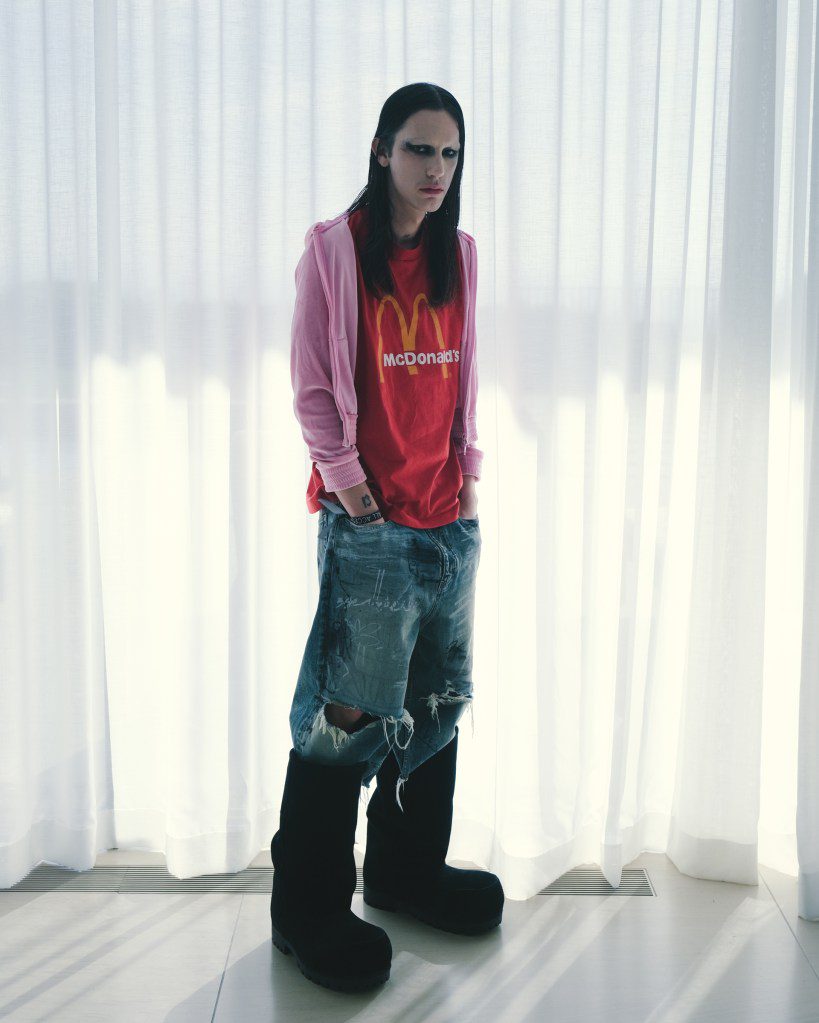
Demna’s husband goes by the name BFRND and composes music for Balenciaga’s shows
The CEO of Balenciaga parent company Kering, François-Henri Pinault, called the campaigns an “error of judgment.” Kim Kardashian, the most visible wearer of Balenciaga on the planet, released a statement saying the images had left her “shaken,” adding that she was “reevaluating” her relationship with the brand.
At the end of 2022, Kering fourth-quarter sales had dropped by an eye-popping seven percent, and Balenciaga’s impressive sales growth, which had soared to 2.5 billion euros that same year, seemingly stalled, according to luxury-market analysts. (The company doesn’t offer specifics on its specialty houses like Balenciaga.)
Following the flap, Demna offered penance for his misdeeds. In an interview with Vogue, he called the campaign “a huge and stupid mistake” and vowed to focus on the “craft” of making clothes. He swore to ease up on playing games with his audience, promising to pivot away from the aesthetic populism that defined his career. “I’m not interested in pop culture, to be very honest,” he said, surprisingly. “I cannot say that my creative vision or approach to design has been influenced by it.” And then he staged a stately and modest-ish Paris couture show in March, which he then admitted to not really liking.
It was a surprising about-face. Since his appointment as Balenciaga’s creative director in 2015, Demna (who prefers to be called by his first name) has injected a kind of grimy — and cheeky — hyper-realism into everything he designs. The New Yorker has called him a “button-pushing impresario,” which accurately describes the pressure he exerts on culture. Though, I would add he’s a playful button-pushing impresario. The kind who can both baffle civilian onlookers and enrage high-fashion gatekeepers while turning the rest of us into excited obsessives, even if we can’t quite articulate why. Maybe it’s his ability to acknowledge directly, without breaking into a laugh, that style is, at its core, a game, and that the adults who want to join in his spectacle must embrace play. Albeit a game for the economic select who can shell out for $1,800 Lay’s potato-chip clutches, $4,800 padded bathrobes, $1,780 trash-bag purses made of calfskin, or 95-cent Ikea bags transformed into $2,000 totes.
“I don’t want to give people a proposition that makes them look rich or powerful,” Demna announced last March in the show notes. “My fashion works from down-up and not up-down.”
Instead of following this conceit, one of the most unique propositions in luxury fashion, it’s not totally clear what Demna is after with yesterday’s show. Is he here to reassert his marketability? Calm the shaken A-listers? It’s all as clear as a desert mirage.
As we talk, it’s evident that his ambitions have been dialed back (or reined in). It’s simpler for him now, or at least he’d like us to believe so. Demna is in the desert to create desire. “This is the main priority for us in what I do,” he tells me. “I want someone to be like, ‘I want to wear that immediately.’”
WHILE IT MAY BE understandable, it should be concerning that the world’s most controversial designer wouldn’t want any more controversy. But where better to conduct a reset than in L.A., the land of reinvention and image rehab?
The city, critic Thom Andersen once noted, is “a fat target for outsiders.” It’s not surprising that Demna, who came of age in the upheaval of post-Soviet Georgia, would find it an alluring target. He tells me that when he first began putting together the ideas for this fall collection, he realized he was making a collection for Los Angeles. The visual references for the designs were mostly paparazzi shots — people running out of grocery stores, yoga studios, weaving through parking lots, and Justin Bieber. “He was like 20 percent of our mood board,” Demna says.
Upon arriving in L.A. from Paris, his second home, Demna went to Erewhon, the upscale market turned cultural meme. He’d decided weeks ago that the store would be a central component of his new collection after his team lobbied him hard on the idea of Erewhon as the ur-symbol of L.A. frivolousness. It would be his “replacement” for the Hollywood sign in his collection, even though Demna had never actually been to an Erewhon before.
He lights up as he tells me about his first visit. Particularly, his encounter with the store’s wall of liquids, which is spread out like a vast bodega display of Erewhon’s signature juices, mineral waters, sparkling waters, millennial-branded sodas, and organic blends. “Everything was so effortlessly and perfectly arranged. I’m a bit of a pain in the ass. I love things to be a certain way. I don’t want anybody to touch my books,” he says. Demna goes on to tell me how a customer in the store mistook him for an Erewhon employee, thanks to his all-black outfit. “This girl asked me where some, I don’t know, a spice was. I loved it. I fit in for once!”

Balenciaga’s first-ever show in Los Angeles was packed with celebrities like Lil Wayne.
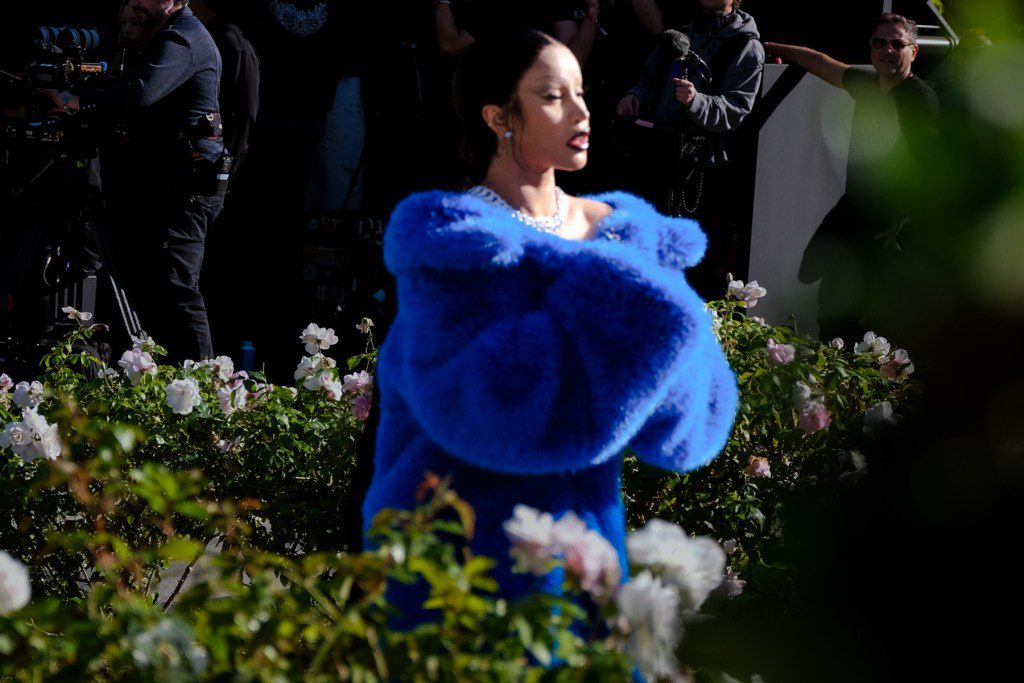
Cardi B walked the show in a head-turning blue furry coat.
Demna’s first visit to Los Angeles was two decades ago, back in 2003, when he came to conduct research for a project. A true European, he’d assumed he could navigate the city without a car. “I realized I was really fucked. Getting around was going to be a nightmare,” he says. “But I immediately fell somehow in love with it. I was like, ‘Oh, I know that image. It’s very Warholian.’”
He had, for years, fed himself on this image. It was a constant in what he’s described as a traumatic childhood, one in which he became a refugee following Russian-backed ethnic violence in his hometown. As early as the age of 10, Demna was buying “trashy magazines” about Hollywood celebrities and gorging himself on heavy metal coming out of the city’s music scene. He tells me about his fascination with the “blue tone” seen in films made here in the Nineties, about “sexy girls,” about filmmaker David Lynch, and the Fast and the Furious franchise, which he counts as one of his favorites.
FOR THE SHOW, Demna had selected a quiet neighborhood in central Los Angeles. The 500 block of South Windsor Boulevard perfectly aligns with the Hollywood sign, which looms above in the distant hills. To create the runway for an outdoor fashion show, circles of security were arranged throughout the neighborhood like an occupational force.
At precisely 1:15 in the afternoon, the first tall, angular models marched down a cracked concrete street clutching various tokens of life in the city: leather coffee cups, iPhones with Airpods, shopping bags filled with wilting produce.
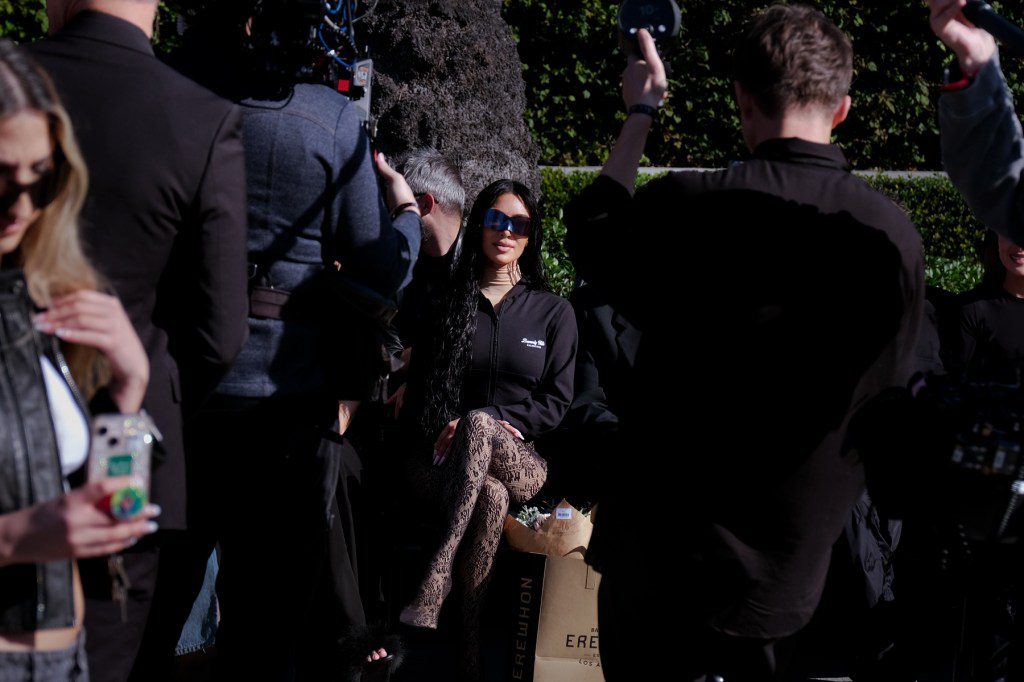
Kim Kardashian was there for the presentation, which took place on a quiet block in the shadow of the Hollywood sign.
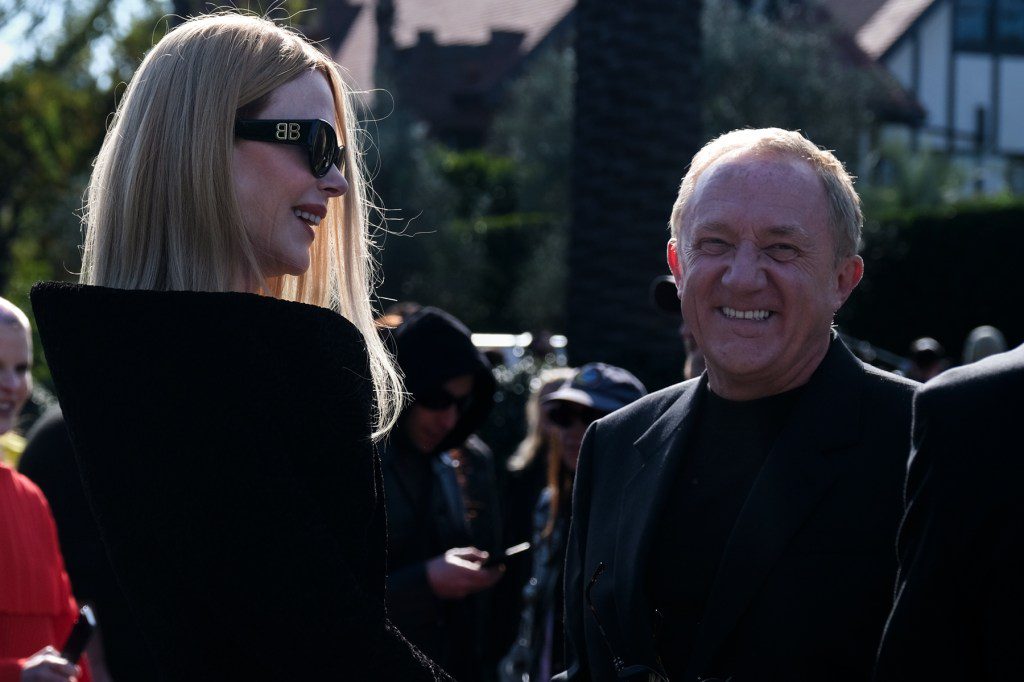
Nicole Kidman with François-Henri Pinault, the CEO of Kering, Balenciaga’s parent company.
There were other tokens of city life, too: the full-spectrum of celebrity wildlife. Kim Kardashian, wearing skin-tone lace leggings and a hoodie, was there with her sister Kendall Jenner, who wore a black gown. In a bit of brand continuity, Balenciaga’s former billboard star Cardi B walked the show in a chemical-blue fuzzy coat. There was Nicole Kidman, who announced a partnership with Balenciaga that day, along with Salma Hayek, married to Kering CEO Pinault, and reality-television star Lisa Rinna. I was hot-boxed by Lil Wayne, who chain-smoked blunts and sat next to the rapper 2 Chainz. In front of me was longtime Demna stan A$AP Ferg paying close attention to every look. Afterward, I ran across Sexxy Red, who clutched a wad of cash in her hand as an accessory.
There were two-piece yoga sets covered with bomber jackets — all ballasted by Balenciaga’s mech-warrior-size 10XL trainers. These alien layers, a Demna hallmark, felt like rational responses to the brutal conditions (economic, social, ecological) unique to Los Angeles.
However, Demna’s POV of life in L.A., and perhaps America beyond it, appears to be a contemptuous one. He sent out models wearing distressed velour tracksuits in shades of bubblegum pink and neon green and pastel yellow. To amplify the Juicy Couture-ness, Demna paired the looks with towering faux-fur boots reminiscent of Uggs. An animal-print coat, with hand-distressed needle work, was paired with hotel slippers, baggy jeans, and an Erewhon purse. It could’ve been mistaken for the thrown-together uniform of a narcotized nepo baby emerging from Chateau Marmont for an emergency supply run.
Prerecorded sounds of traffic poured onto a traffic-less street. Demna works closely with his husband, BFRND, to curate the sounds for a Balenciaga show, which are as reference-laden as the collection on the runway. BFRND generally keeps the music in a familiar Euro-club zone — driven by beefy geometric percussion and icy synths. There’s a friendly goth menace to his sounds, too, which he describes to me as “overstimulating.” For Saturday’s event, BFRND wrote and recorded more than 50 voice-overs of faux advertisements for juice cleanses and being one’s best self. The saccharine energy clashed with the ravaged-looking models careening down the street.
Demna says he’s “obsessed” with advertising, particularly U.S. commercials. To most American ears, recontextualizing ads is almost always an irony-laden exercise. A friend texted me after the show to say the voice-overs were “so dark.” Demna insists “irony” is never present in his designs or his shows. In fact, he considers the word a “negative term,” one that shuts down conversations about the work.
He insists his aim for the show was ultimately utopian. “This was a naive proposition of how it could have been also in the ideal world,” he says.
I tell him I felt a low hum of anxiety during the show. He appears confused. “In a good way?” he asks. I tell him that it’s probably good to be provoked in some kind of way. He appears to agree: “OK, good. We don’t want people to fall asleep.”
WHEN I ASK DEMNA about his relationship with America today — after everything — he says it’s “more powerful than it has ever been,” and crosses his legs and stares out at the pool in the backyard. Then he describes how “tricky” social media and the internet can be. “We need to learn how to use these digital tools,” he says. “I think American culture is the biggest player in that. I’m a bit scared of the fact that these digital tools are completely out of control. They can become very toxic and very dangerous. And vice versa, it starts to direct the cultures.”
Of course, another thing directing the culture in Los Angeles, specifically, is Demna himself. Encountering the Balenciaga superfans at the show and at the Rodeo Drive store afterward, it was clear Demna’s trip to Hollywood was a rare kind of ouroboros moment for him, a connecting of a large cultural loop. Throughout our conversation, Demna explains that L.A. has always been the source code for his thinking. An element that had created him, and that he had, in turn, evolved.
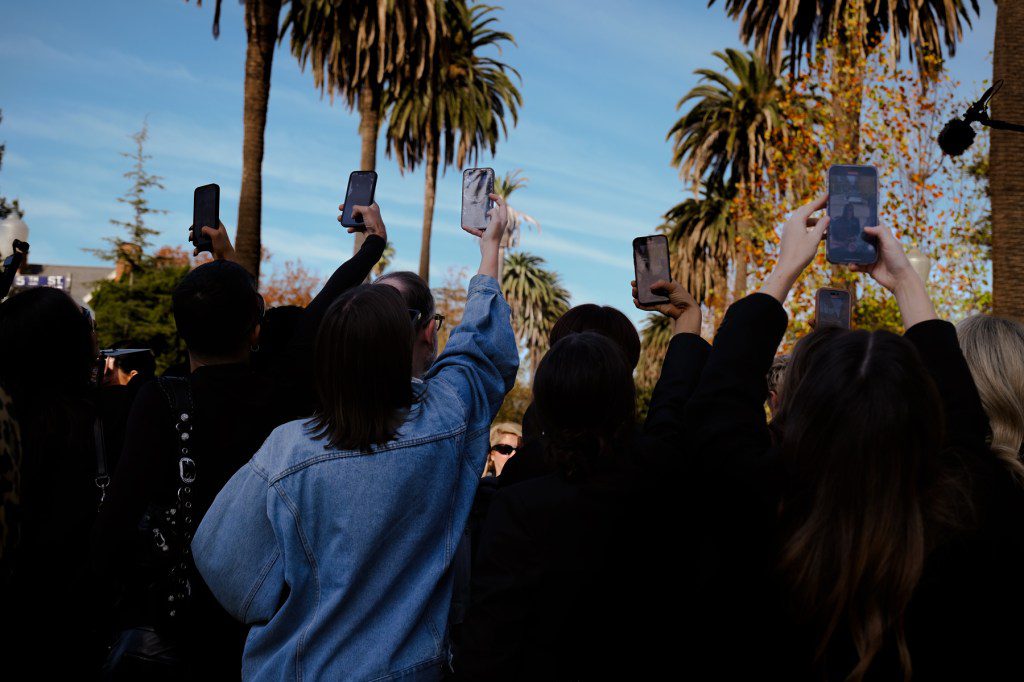
Fans lined up, taking photos outside the event.
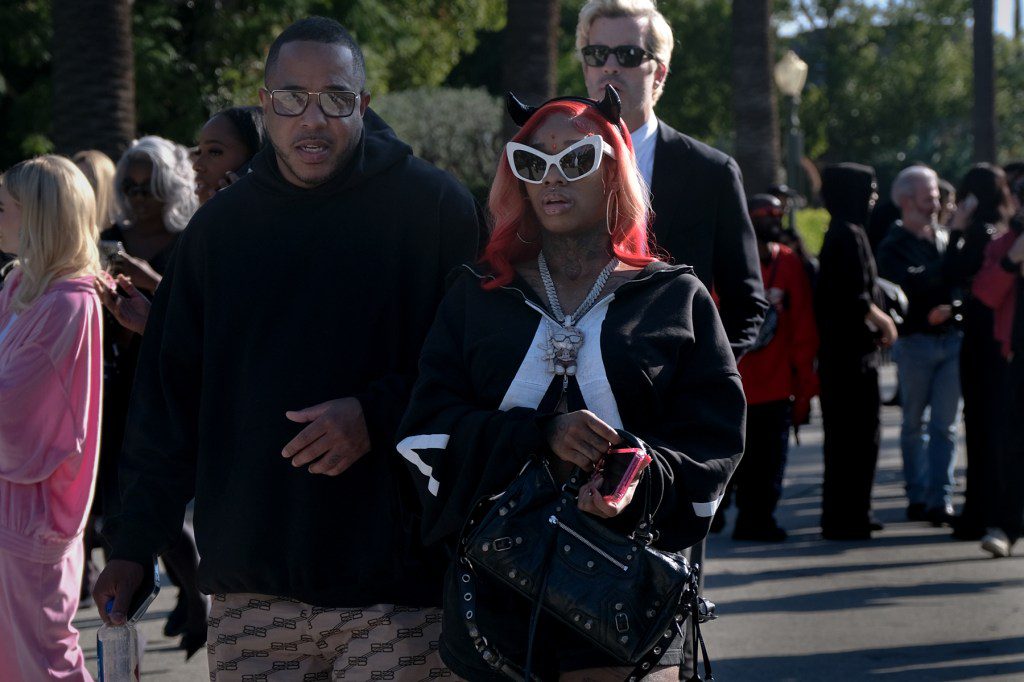
Rapper Sexxy Red was there, wearing a black horn headband and carrying around cash as an accessory
I had come to Hollywood to see fashion’s foremost edgelord rummage through this cultural megastore and reinterpret the city’s capacity for alienation and superficiality and mythmaking. But looking at it from a distance, it seems Demna, who can always find the sublime in the grotesque, came to Hollywood to get lost in the city’s alienating sprawl.
This instinct to seek refuge in L.A.’s weirdness might not make sense if we see Demna strictly as a visionary charting out our zeitgeist — even more, as the creative director of a massive corporate luxury house. But for Demna, the man, who felt at home among the staffers at Erewhon, it’s something else: profoundly human and painfully relatable.
Outside, a small fleet of black SUVs has pulled into the expansive driveway. Demna and his husband have to catch a flight back to Paris and then on to home in Geneva. Before leaving, Demna walks back over to ask me why I think Los Angeles gets a bad rap. He asks in a way that is curious, bordering on incredulous.
He listens attentively, brightening when I mention the city’s endless sprawl and its traffic. He tells me how much he loves traffic jams because they give him a chance to disconnect. Even more, he loves the drive-thrus throughout the city. Have I used the drive-thru at Starbucks, he asks excitedly. Demna, for once, sounds like he’s at home. “They’re everywhere!” he says. “I never knew I needed a Starbucks drive-thru until I came to L.A.”


